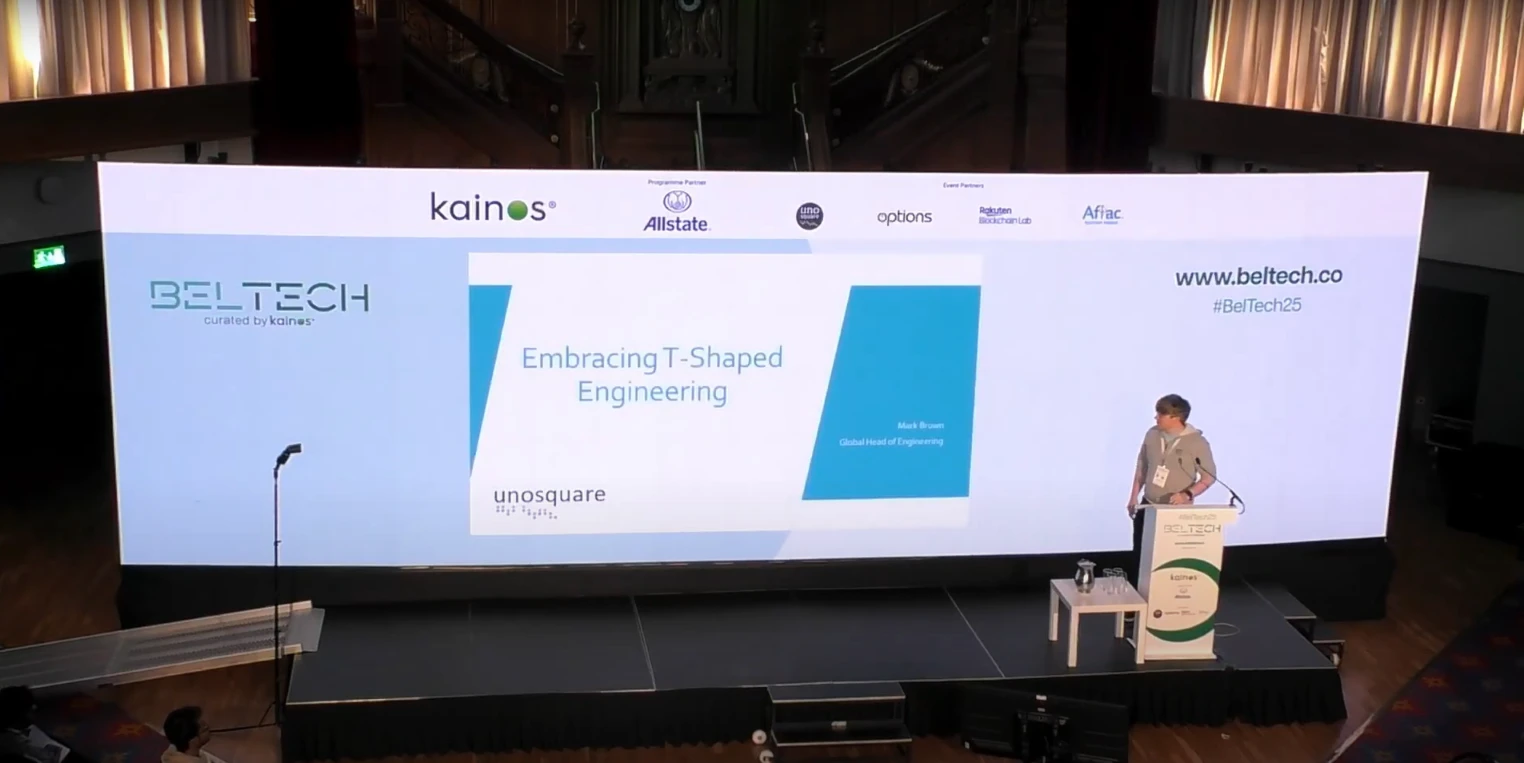Picture this: you’re mid-project, deadlines breathing down your neck… and suddenly the one person who knows how to handle that critical piece of code is out for two weeks.
Or worse, they’ve moved to another project. Work stalls, the backlog piles up and your “go live” date quietly drifts into the future.
Sound familiar?
This is the classic trap of over relying on deep specialists or spread thin generalists. Specialists create bottlenecks. Generalists risk not going deep enough.
The fix?
T-Shaped engineering. And it’s not just a nice-to-have, it’s how we at unosquare keep projects moving fast without breaking.
The T-Shaped Advantage
Think of a capital “T”:
- The horizontal bar = breadth of knowledge across multiple disciplines, enough to understand, empathize and collaborate with BAs, QAs, Product Owners, DevOps and beyond.
- The vertical bar = deep expertise in a specific area, your superpower.
This combo means you can adapt quickly, solve problems collaboratively and avoid those “only one person can do this” bottlenecks that kill momentum.
Why extremes fail
- I-Shaped specialists: laser-focused experts…until they become the single point of failure.
- Pure generalists: adaptable, but lack the technical depth to own high-stakes decisions.
T-Shaped engineers sidestep both issues, offering the adaptability of a generalist with the mastery of a specialist.
How we build them at unosquare
We don’t just talk theory, we’ve built a hands on, continuously evolving program that turns new hires into full context contributors.
From day one, engineers follow a learning track that blends hard skills, soft skills and real-world application:
- Project Management: Agile execution, MoSCoW and Eisenhower prioritization, capacity planning, Jira/Miro mastery.
- Business Analysis: Functional vs. non-functional requirements, UML diagrams, market modeling, MermaidJS.
- Architecture & Design: SOLID, KISS, DRY, design patterns, C4 diagrams, documented architectural decisions (ADRs).
- Developer Experience: Docker, local environments, monorepo tooling, CI/CD best practices.
- Communication Mastery: Running better meetings, giving/receiving feedback, storytelling for technical buy-in.
- Specialization Deep Dives: Back-end, front-end, databases, UX, QA, DevOps, cloud, aligned to each engineer’s core strength.
And here’s the kicker: all of it is applied directly to live projects from day one. No simulations, no “someday” scenarios, just immediate, measurable impact.
What clients get from it
This approach does more than ship features on time, it changes how we work with clients. Instead of being “the vendor who delivers code,” we become strategic collaborators who understand the full picture, speak every stakeholder’s language and anticipate challenges before they hit.
T-Shaped engineering isn’t an empty term. It’s how we make sure our teams stay deep enough to guide, broad enough to collaborate, curious enough to learn and focused enough to deliver, no matter how many curveballs a project throws.
Want to see how we make it happen?
Watch the full talk from our own team on how we build T-Shaped engineers at unosquare — and why it’s transforming how our clients work.


